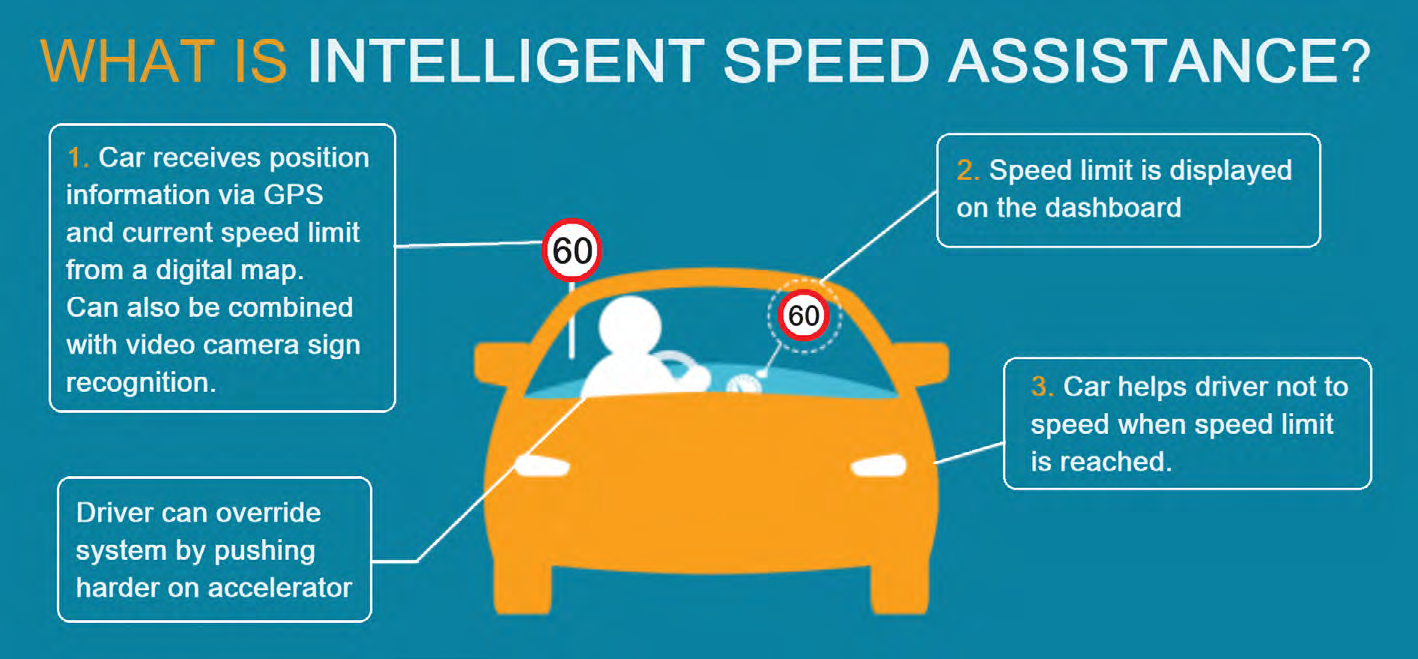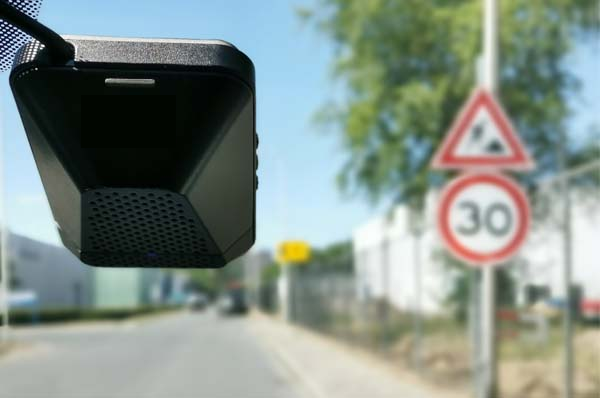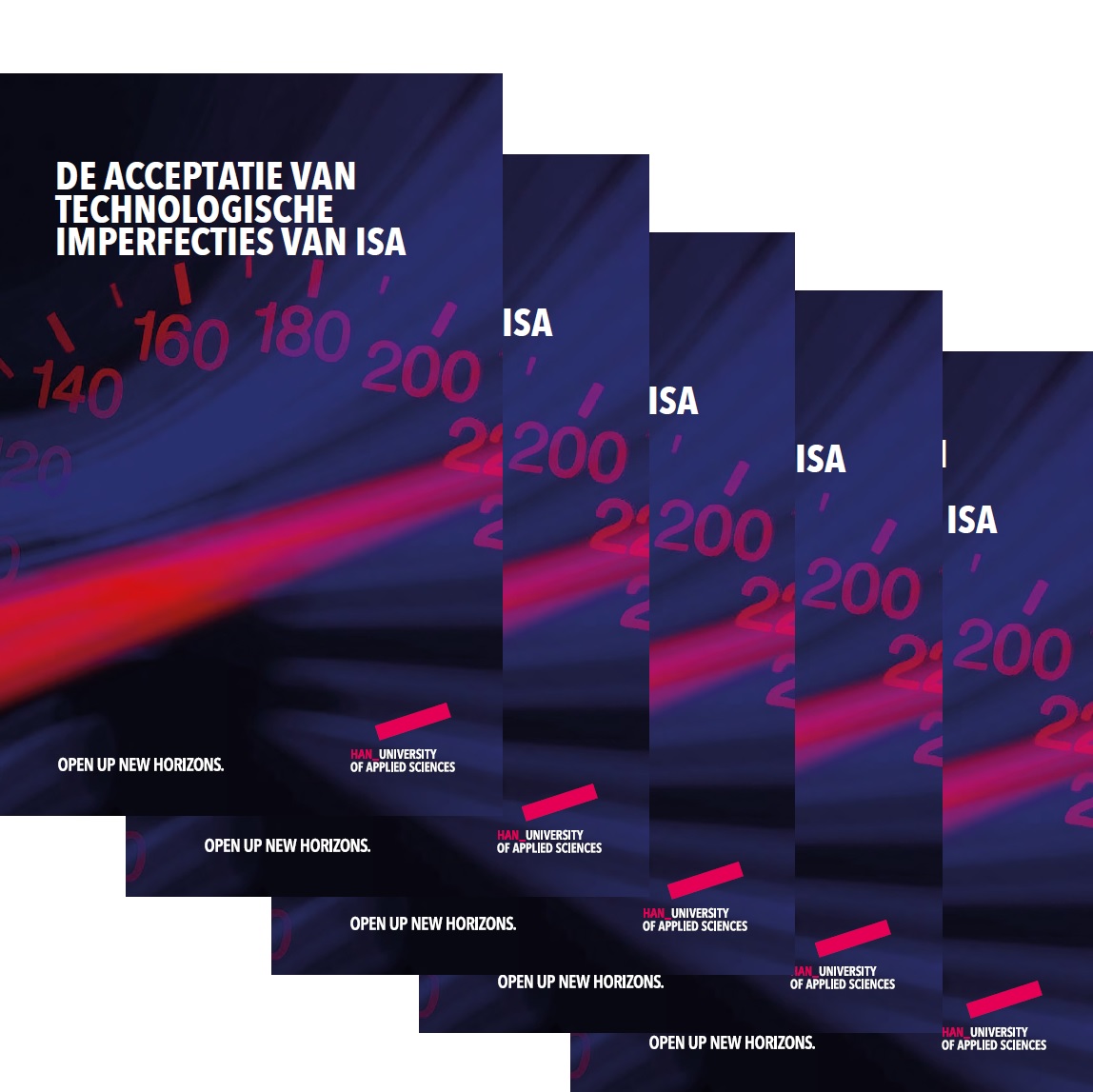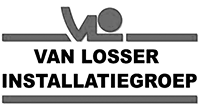ACTI-I has been successfully completed
| In August 2023, the ACTI-I project was completed with the presentation of the results in a booklet that was published in a limited edition, but can also be downloaded in PDF format via this link (In Dutch). |  |
Goal project ACTI-I
ISA, an abbreviation that stands for Intelligent Speed Assistance*, is one of the driver assistance systems that has been mandatory in all new passenger vehicle models throughout Europe since July 2022.
Although (a form of) ISA is now mandatory in all new car models, many drivers are still unfamiliar with ISA. They therefore still need to accept this new technology and learn how to drive with it. This is important, because the intended goals of ISA can only be achieved if there is a high level of acceptance.
There is now sufficient evidence that ISA can be widely accepted. However, this is mainly true when the system works perfectly. Previous research has also shown that drivers apply higher standards for accepting technical failure in vehicle systems than for their own vehicle control and driving style. And this is where the problem lies when it comes to the use and acceptance of ISA. At present, ISA does not yet work perfectly, and many drivers therefore switch the system off.
* Sometimes the A also stands for “adoption” or “adaptation”. This once again demonstrates the variety of interpretations of the abbreviation ISA.
The imperfect functioning of ISA is mainly due to:
- incorrect detection of speed signs by the visual detection systems in the car
- incorrect speed data in (government) databases that use digital maps to provide speed recommendations on the road being driven on
- unnecessary and/or unpleasant interventions in the speed of the vehicle.
Research design ACTI-I
The ACTI-I research project investigated the arguments and experiences that lead drivers of vehicles with a retrofitted mandatory ISA system to consider driving with the system, and at what point the imperfections of the system become unacceptable and the system is switched off. The underlying goal is to increase the fulfilment of ISA’s potential.
Research question:
What impact does technical failure have on the acceptance of ISA?
Approach:
- Literature review on failure and acceptance of new technology (General) and driver assistance systems
- Interviews and participant survey on management behaviour and expectations of, experiences with, and appreciation for ISA
- Research into ICT for ISA by two final-year students of the Master’s programme in Engineering Systems at GeoJunxion
- 7 weekly meetings with the consortium partners in 2022 and a joint working session in January 2023
Contact V-tron:
Summary ACTI-I
Speed is one of the most important basic risk factors in traffic. The faster a car is driven, the greater the risk of (serious) accidents and the higher the emissions. Policy is therefore increasingly focused on preventing excessive speeds and speed differences in road traffic. The ISA (Intelligent Speed Assistant) driver assistance system is one of the technological solutions that can contribute to this. ISA comes in many forms, from informative (smart technology informs the driver of the applicable speed limit) to coercive (the car is physically restricted from driving faster than the speed limit).
There is now sufficient evidence that the acceptance rate of ISA can be high when the system works perfectly.
However, practice is stubborn. Driving with ISA depends on many systems, and both the system in the car and the many complex systems required for the underlying information provision can fail or transmit incorrect information. Drivers also experience and assess the active speed limitation by ISA differently. All this stands in the way of the acceptance of ISA, preventing all the positive effects from being achieved.
The ACTI-I project investigated the impact of technical failure on the acceptance of ISA based on interviews with experts, potential users and test subjects, a literature study, and research into the accuracy of digital maps. The report presents the methodology, findings and main recommendations. The main conclusion is that ISA has great potential for improving road safety because, when functioning properly, the system is expected to be used by a large proportion of drivers. However, the state-of-the-art technology is not yet advanced enough to realise this potential. In particular, the digital infrastructures required for high-quality data in the system are not sufficiently developed and/or coordinated. Drivers experience the adverse and sometimes even dangerous consequences of this while driving, which obviously does not promote the adoption of the system.
Based on the results of ACTI-I, the consortium therefore argues that both technology developers and policymakers must act quickly (or more quickly) to get the digital infrastructure in particular up to speed. The physical infrastructure will also need to be “updated” in order to optimise the integration of camera images into the system.
Enjoy reading, and feel free to contact the researchers if you would like to know more about this project and its results.
On behalf of the complete consortium,
- Marith Dieker, researcher at HAN Automotive Research
in cooperation from HAN by
Partners in ACTI-I
- GeoJunxion: Bojan Sobocan, Arjan Spigt
- Yellowchess: Ferdy Gilsing, Iris Wellen
- V-tron: Steven Herskamp, Wim Vossebelt, Niels Kneppers
Project partners:
ACTI-I is a one-year Kiem project co-funded by the SiA governing body for practice-oriented research.
























